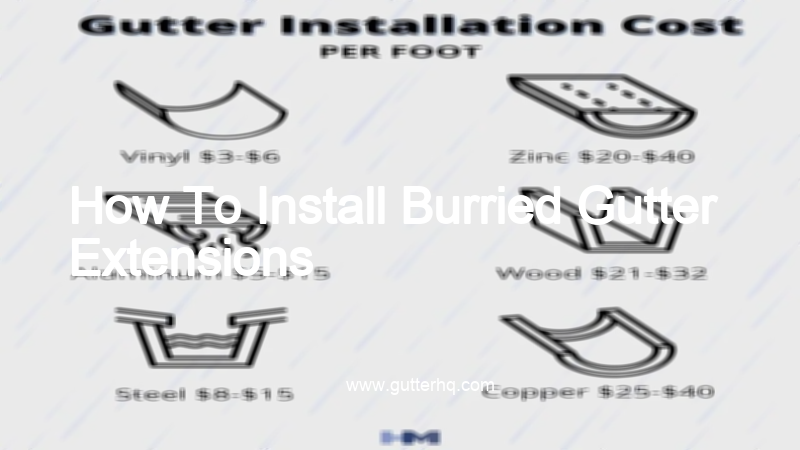- Begin by finding the location of your buried gutter extensions. You will likely need to dig a small trench to expose the top of the buried pipes.
- Next, use a hacksaw or similar tool to cut the pipes to the desired length.
- Once the pipes are cut, fit the gutter extensions onto the buried pipes. Make sure the fit is snug to avoid leaks.
- Finally, backfill the trench and compact the soil around the buried gutter extensions.
How do you install underground downspouts?
- Start by excavating a trench around the perimeter of your home. The trench should be about 6 inches wide and 18 inches deep.
- Next, install a perforated drain pipe in the trench. The drain pipe should be slightly sloped so that water can drain away from your home.
- Finally, cover the trench and pipe with gravel and soil. Make sure that the gravel and soil are compacted so that water can drain properly.
Is it OK to bury downspouts?
There is no definitive answer to this question as it depends on a number of factors, such as local building codes, the type of soil on your property, and the amount of rainfall in your area. However, in general, it is generally considered acceptable to bury downspouts, as long as they are properly installed and maintained.
Downspouts are an important part of your home’s rainwater drainage system, and they should be installed in a way that ensures they will function properly. When burying downspouts, be sure to bury them deep enough so that they will not be affected by frost heave in colder climates. In most cases, a depth of 2 feet is sufficient. It is also important to make sure that the downspouts are installed with a slight slope so that water can drain properly.
If you are unsure about whether or not it is OK to bury downspouts on your property, it is always best to check with your local building department or a qualified contractor.
How do I extend my downspout away from my house?
One way to extend your downspout away from your house is to simply attach it to an extension. These can be found at most hardware stores. Another way is to cut a length of PVC pipe to the desired length and attach it to the downspout with PVC cement.
How do buried downspouts work?
- Buried downspouts are installed underground, typically next to the foundation of a home.
- They are connected to the home’s gutter system, and they collect and funnel rainwater away from the foundation.
- This helps to prevent water damage to the foundation and basement, and it also helps to keep the landscaping around the home healthy and free of standing water.
How deep do buried downspouts need to be?
This is a great question that many people have. The answer can vary depending on a few different factors. The first factor is the climate. If you live in an area with very cold winters, you will need to make sure your buried downspouts are deep enough so that they don’t freeze. The second factor is the type of soil you have. If you have very sandy soil, you will need to make sure your buried downspouts are deeper so that they don’t shift or move over time. The third factor is the amount of rainfall you get. If you live in an area that gets a lot of rainfall, you will need to make sure your buried downspouts are deep enough to handle the increased runoff.
In general, you will want to make sure your buried downspouts are at least two feet deep. This will help ensure that they are able to withstand the elements and last for many years.
Do buried downspouts get clogged?
While it is possible for a buried downspout to become clogged, it is not especially likely. The main reason for this is that buried downspouts are typically made of PVC or another type of durable, smooth material that is not susceptible to clogging the way that other types of materials (such as concrete) can be.
How far should rain gutters extend from house?
It is a common misconception that rain gutters should extend from the edge of the roof. In reality, they should extend about six inches from the edge of the roof. This will allow the gutters to catch the majority of the water that falls during a rainstorm.
If the gutters extend too far from the edge of the roof, they will not be able to catch all of the water. This can lead to water damage on the exterior of the house.
Extending the gutters too far from the edge of the roof can also cause them to sag. This is because the weight of the water in the gutters will cause them to pull away from the house.
It is important to make sure that the gutters are properly installed. This will ensure that they are able to catch the water and prevent any damage to the house.
Conclusion
If you’re looking to install buried gutter extensions, there are a few things you’ll need to keep in mind. First, make sure you have the correct tools and supplies. Second, be sure to follow the instructions carefully. And third, be prepared for a bit of a messy job. But with a little patience and elbow grease, you’ll be able to get the job done and enjoy the benefits of having buried gutter extensions.
